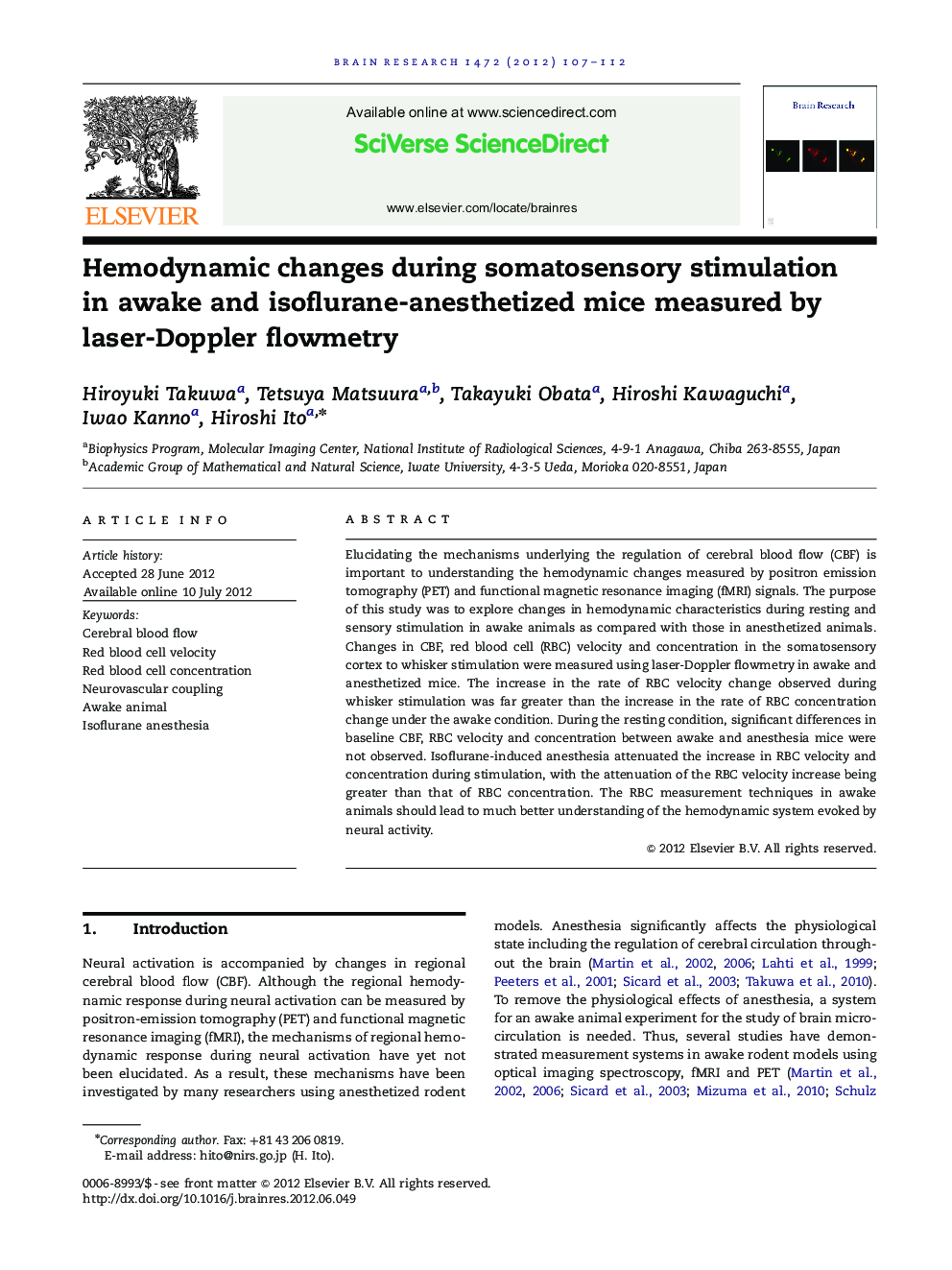| Article ID | Journal | Published Year | Pages | File Type |
|---|---|---|---|---|
| 6264211 | Brain Research | 2012 | 6 Pages |
Elucidating the mechanisms underlying the regulation of cerebral blood flow (CBF) is important to understanding the hemodynamic changes measured by positron emission tomography (PET) and functional magnetic resonance imaging (fMRI) signals. The purpose of this study was to explore changes in hemodynamic characteristics during resting and sensory stimulation in awake animals as compared with those in anesthetized animals. Changes in CBF, red blood cell (RBC) velocity and concentration in the somatosensory cortex to whisker stimulation were measured using laser-Doppler flowmetry in awake and anesthetized mice. The increase in the rate of RBC velocity change observed during whisker stimulation was far greater than the increase in the rate of RBC concentration change under the awake condition. During the resting condition, significant differences in baseline CBF, RBC velocity and concentration between awake and anesthesia mice were not observed. Isoflurane-induced anesthesia attenuated the increase in RBC velocity and concentration during stimulation, with the attenuation of the RBC velocity increase being greater than that of RBC concentration. The RBC measurement techniques in awake animals should lead to much better understanding of the hemodynamic system evoked by neural activity.
⺠Hemodynamic changes evoked by stimulation was observed in awake and anesthetized mice. ⺠The increase in RBC velocity was much larger than that of concentration in awake mice. ⺠Isoflurane anesthesia significantly attenuated the increase in RBC velocity.
